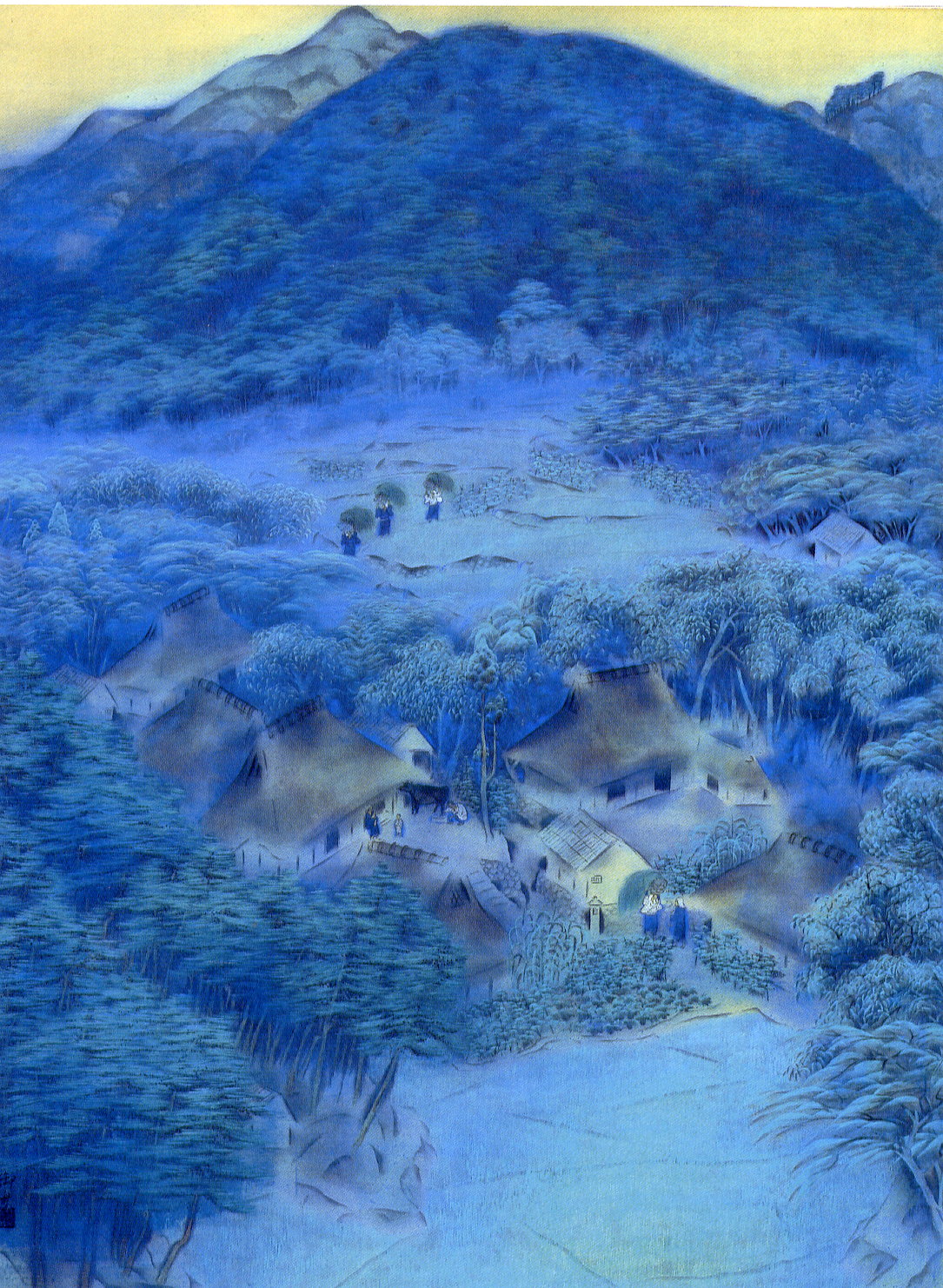BY: IKB WIND | February 08th, 2024

[ABOUT HAYAMI GYOSHU]
- 1894-1935
- Modern Nihonga painter
- Active during the Revival of the Inten (Japan Art Institute Exhibition) in Tokyo, 1920’s.
- Influenced by Imamura Shiko’s style in terms of brightness of palette & other elements of Nihonga reform.
- Train accident in 1919 resulted in a leg amputation.
- Subsequently, his representational style became increasingly abstract and morbid.
Hayami Gyoshū (1894-1935) was a Nihonga painter from the Inten Revival era. His paintings were luminous in nature, with a contemporary sense of perception.
For instance, in Tokyo Dancer, the soft, asymmetrical outlines that emphasize the woman’s blue-gowned figure also make her appear airbrushed!

Painted on silk, the texture of the canvas adds an exquisite layer of detail to background elements such as the floral vase. The woman’s indigo gown also has the appearance of being elegantly stitched together.
Some interplay between light and shadow can be appreciated in the background, enveloping the woman with a soft aura of luminosity within a moment of contemplation.

IMPRESSIONISTIC LIGHTING IN HAYAMI GYOSHU’S PAINTINGS
Village in Shugakuin (1918) is a good example of Gyoshu’s dexterity with lighting and value consideration. The predominantly blue color scheme suggests falling dusk on the horizon. The forrest seems shrouded in mystery as a dreamy mist envelopes the trees surrounding the plane.
The long brushstrokes are reminiscent of Post-Impressionism, though it is unknown if Gyoshu was directly influenced by the Western art movement. However, Nihonga itself was going through an era of modernization, calling for a re-uptake of traditional Japanese art techniques that had been set aside by the mainstream in favor of Westernized perspectives like those of Impressionism. Certainly, the painting’s luminosity and emphasis on time of day are in line with impressionistic approaches, as does its lengthy brush technique.
There is also a dreaminess to the scene reminiscent of Romanticism. The early 1900’s were energizing the transition towards modernism, so the village is presented with a certain fondness or nostalgia.

Leave a Reply